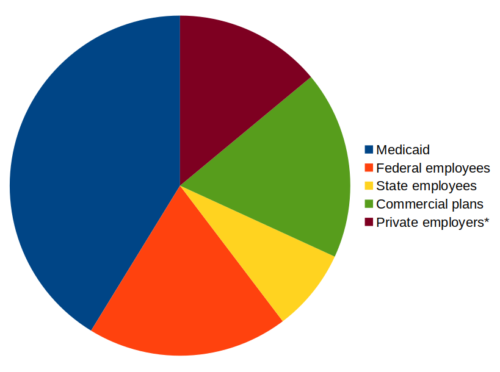GLP-1 economics, real-time BP monitoring, cocoa vs fat, and more!
23 Nov 2024
Posted by Andrew Kantor
Easy BP monitoring
Continuous glucose monitoring is old news, but how about continuous blood pressure monitoring? That’s what bioengineers at UC San Diego have developed and tested.
The patch is a soft and stretchy device, about the size of a postage stamp, that adheres to the skin. When worn on the forearm, it offers precise, real-time readings of blood pressure deep within the body.
For science geeks, it works with a type of ultrasound sonar that can “track changes in the diameter of blood vessels, which are then converted into blood pressure values.”
Not only did they find it as good as a blood pressure cuff, it was as accurate as an arterial line — the kind of sensor inserted into an artery and the gold standard of continuous BP measurement.
We’ve added more Fall Region Meetings!
We’re finalizing times and places for our Fall Region Meetings, and we’ve got three more confirmed. Don’t miss out on a great night of food, drink, and networking with your fellow pharma professionals!
The latest additions:
- Region 6 is Tuesday, 12/10 at 6pm in Macon.
- Region 7 is Wednesday, 12/4 in Kennesaw.
- Region 11 members are invited to attend the Region 10 Fall Meeting on Wednesday, 12/11 in Athens.
Click here for complete details on your region meeting!
Opioids, dementia, and nuance
The bad news: Yes, taking opioids regularly can increase your risk of dementia.
The good news: It doesn’t affect people using the drugs short-term, and may not apply to younger people (the study only looked at people over 60).
It’s about cumulative use. Those shifty Danes found that once someone hits a threshold of about 90 ‘total standardized doses’ — that’s 90 days of treatment on the equivalent of 30 mg of morphine — the risk of dementia increases anywhere from 8 to 29%. (Interestingly, the greatest risk increase was in people aged 60-69.)
The study had a lot of data, too — it included health info on almost 2 million people over 25 years — and to reduce the question of correlation/causation, they incorporated a 5-year lag between prescription and dementia diagnosis. Still, as usual, more research is needed.
Who’s paying for GLP-1s?
So who’s paying for GLP-1 drugs in the US? Medicaid and federal-employee health plans cover the most, according to the rather frighteningly named AXIACI Obesity Coverage Nexus.
Here’s the breakdown:
- Medicaid: 31.6 million Americans get GLP-1 coverage through state programs for low-income people.
- Federal government employees: 13.6 million
- State government employees: 6.0 million
- Commercial insurance: 13.7 million
- Private employers (estimated): 10.7 million
And here’s a chart for you visual people:
More employers are covering them
According to data from Mercer — the financial firm, not the university — GLP-1 coverage from larger employers (more than 20,000 employees) hit 64% in 2024, up from 56% last year.
If you include firms with just 500 or more employees, that coverage drops to about 44% — up from 41% last year.
An even simpler Alzheimer’s test
Alzheimer’s treatments might still be out of reach (or so it seems), but tests for the condition are emerging — for better or worse. The latest comes out of Sweden, and it uses a finger-prick to collect a sample that can be delivered to a lab for analysis.
Like existing blood tests, which are still making their way into the mainstream, this tests for an abnormal protein called ptau217. There are a couple of big differences, though. First, it only requires a few drops of blood from a pinprick — no phlebotomist necessary. (It might even be easy enough for home use.) Second, the sample is sent on a special card that doesn’t require refrigeration, making it suitable for places where transport might be an issue.
It’s now being tested in Europe for potential availability in the next couple of years.
Cocoa in times of stress
We all know that a cup of hot cocoa can help with stress, but it might do more. British researchers found that “flavanol compounds found in abundance in cocoa and green tea can protect vascular function during periods of everyday stress.”
In other words, if the same stress that drives you to cocoa is also driving you to eat high-fat foods (the Brits used butter croissants, cheddar cheese, and whole milk in their study), that cocoa will help alleviate some of the negative vascular effects of the delicious fatty food.




